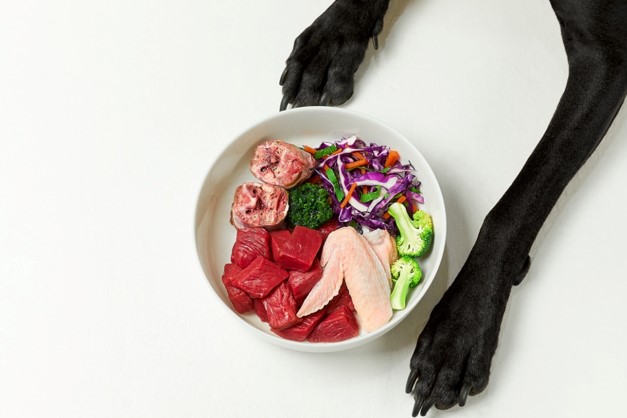Ornate feathers give backyard fowl an unmistakable look
It may be inching closer to pheasant season, but there’s one member of the pheasant family that might surprise you: the peacock.
Easily recognized by their resplendent display of feathers, the correct name for the bird is peafowl. The males are peacocks and the females are peahens, native to India and southeast Asia.
The male’s train of feathers average 5 or 6 feet long. Peahens are plain and lack the long tail of the peacock.
Males begin growing their train at about age 2 and don’t have fully developed trains until ave 4. They shed their train every fall and grow a new one for the next year’s mating season, which runs from spring through mid-summer. During mating season, they’ll display their train often during the day, sometimes all day long.

The beauty of the peacock is often what attracts people to the bird. Photo by Gail Bleidt.
Pete and Gail Bleidt have had peacocks on their small farm near Lewellen, Nebraska since 2001, when Pete’s mom gave a pair to them.
Gail Bleidt feeds the peafowl alongside her chickens, and notices that the peafowl pick the black sunflower seeds out of the birdseed mix she sometimes throws her chickens as a treat. They eat corn, she said, and love fruit too, especially grapes and blueberries.
“They’ll eat a whole grape, swallow it right down,” she said.
Hers are mostly free range, eating insects, bugs and grasshoppers, keeping the Bleidt place free of ‘hoppers.
Bleidt doesn’t pen hers up at night. She lets them roost in the big cottonwood trees on the farm. They’ll fly 20 or 30 feet up to spend the night. If the weather or wind is bad, they’ll roost in the rafters of the goat barn.
The males’ trains are beautiful, but they can be a detriment. The wind catches them and will blow the birds sideways, Bleidt said. Last year, when a windstorm came up, it blew a roosting peacock out of the tree, causing the bird to break a wing.
Peahens lay big eggs about every other day, and they don’t sit on the nest till they’re done laying.
People are also reading…

The peacock struts his stuff, with his train of feathers fully open, in order to attract the attention of the peahen.
The hens aren’t particularly suited as mothers. They often nest in the tall grass or weeds, which makes the eggs hard to find. Once the chicks hatch, which takes about a month, the hen often leaves them or loses them in the tall grass. If Bleidt finds a peahen sitting on eggs, she tries to enclose the hen and the nest, so when the chicks hatch, they don’t get lost or eaten by predators.
The birds can be a nuisance. They tend to walk around and roost everywhere during the daylight hours: on vehicles, decks or tractors – anywhere that’s convenient. They also make a cry that sounds like a woman’s scream, which can be startling to someone who hasn’t heard it before.

The resplendence of the peacock feather draws people to the bird.
The birds’ ornate train is what is so memorable. The tail feathers, which are called coverts, make up more than 60{95b18eb6fc4f42efd0d92738dfc3fb79fde21da267a711ecdf0381147c27bb86} of the birds’ total body length. Most peacocks have about 200 tail feathers. Of those 200 tailfeathers, approximately 170 are eye feathers and 30 are “T’ feathers. The shapes complement each other. The T feather has a profile that is the inverse of the shape of the eye feather. The eye feather has the identifiable pattern while the T feather forms a border to the fan.
Eye feathers are often sold for decoration. Bleidt doesn’t sell hers, but she has given them to a friend who used them for fly fishing lures.
Along with looking pretty, the males rattle their feathers for attention, which makes a unique sound.

A white peahen peeks into Gail Bleidt’s window at her home near Lewellen, Neb.
Peafowl come in a variety of colors. The two most recognizable are the blue or Indian peacock, and the green, or Japanese peacock. Other varieties include white (the feathers are entirely white, but the bird has a blue eye so it is not an albino); peach; Buford bronze; cameo; jade; taupe and more. There are more than 220 varieties of peafowl.
In the wild, the fowl can live nearly anywhere, from forested areas to farm fields. They sometimes damage crops.
In Bleidt’s experience, they don’t necessarily eat flowers and garden vegetation, but they’ll walk through her garden looking for bugs.
“They have really big feet and are destructive that way,” she said.
But the birds’ beauty is what Bleidt loves.
“People just love to see peacocks. They are amazed to see them walking around,” she said. “The absolute beauty of them is what I love the most. I love to look at them.”


/cloudfront-ap-southeast-2.images.arcpublishing.com/nzme/6LNWD6GT2VARDOOSGYRZR3SRGU.jpg)





